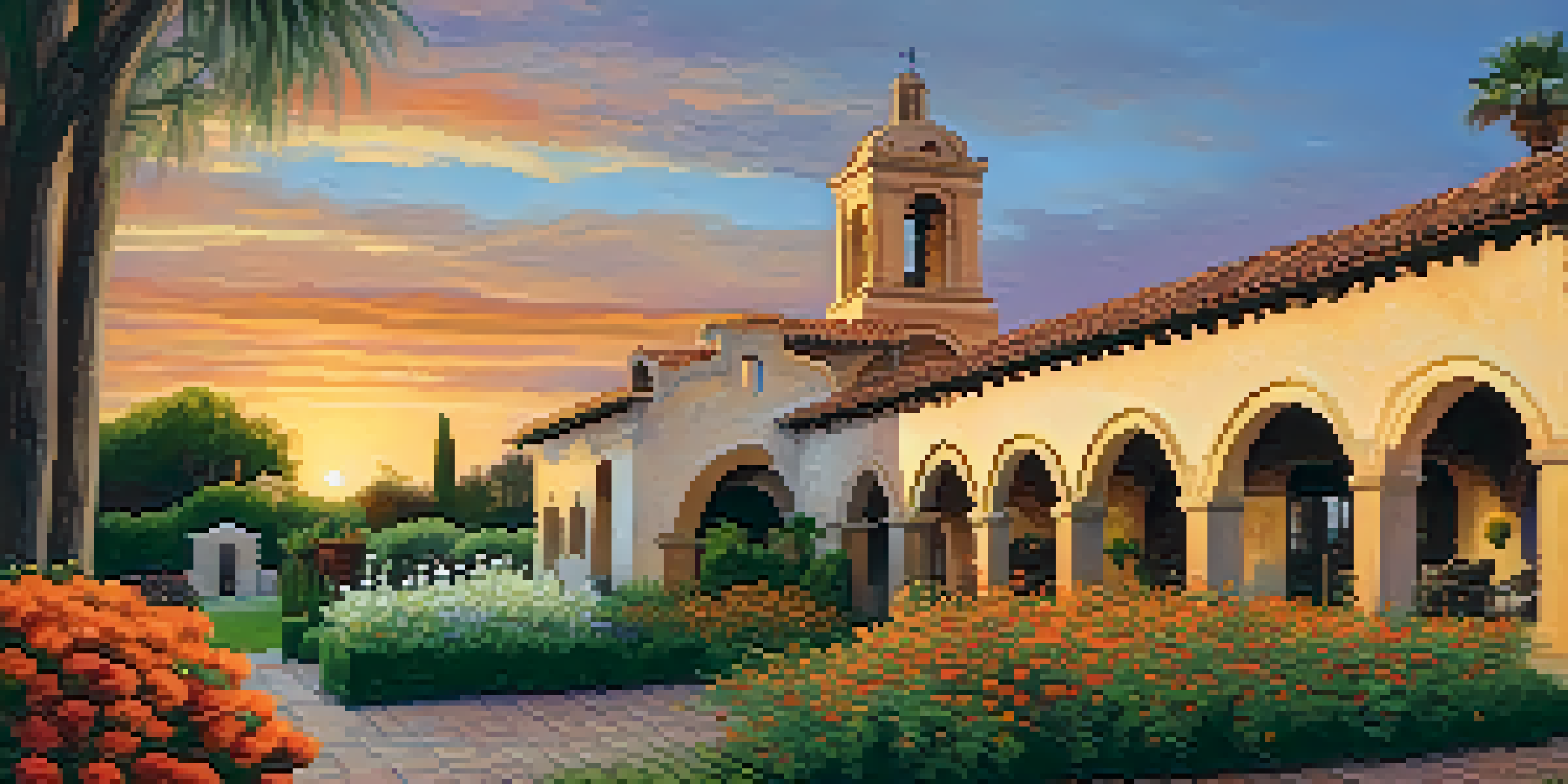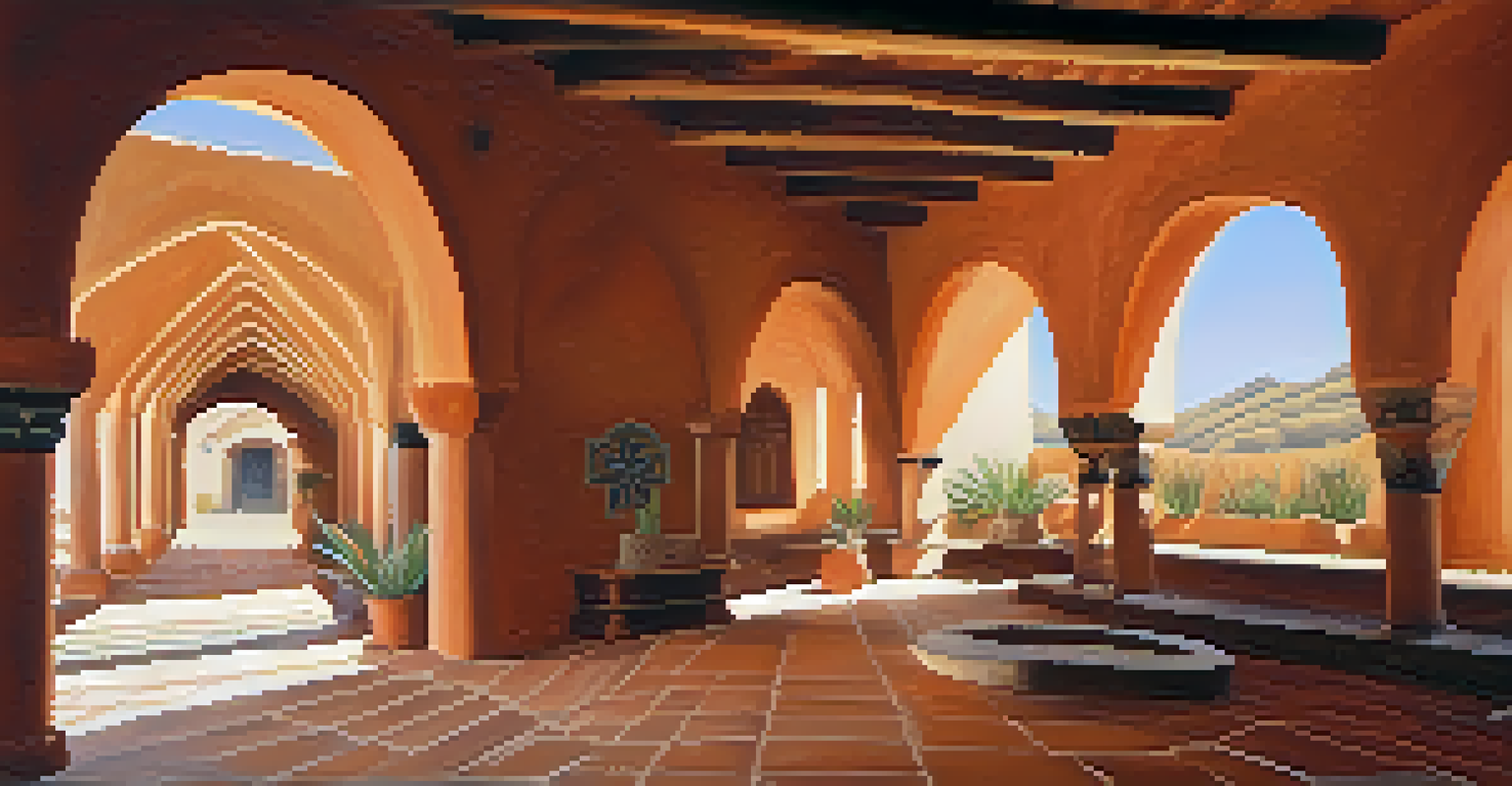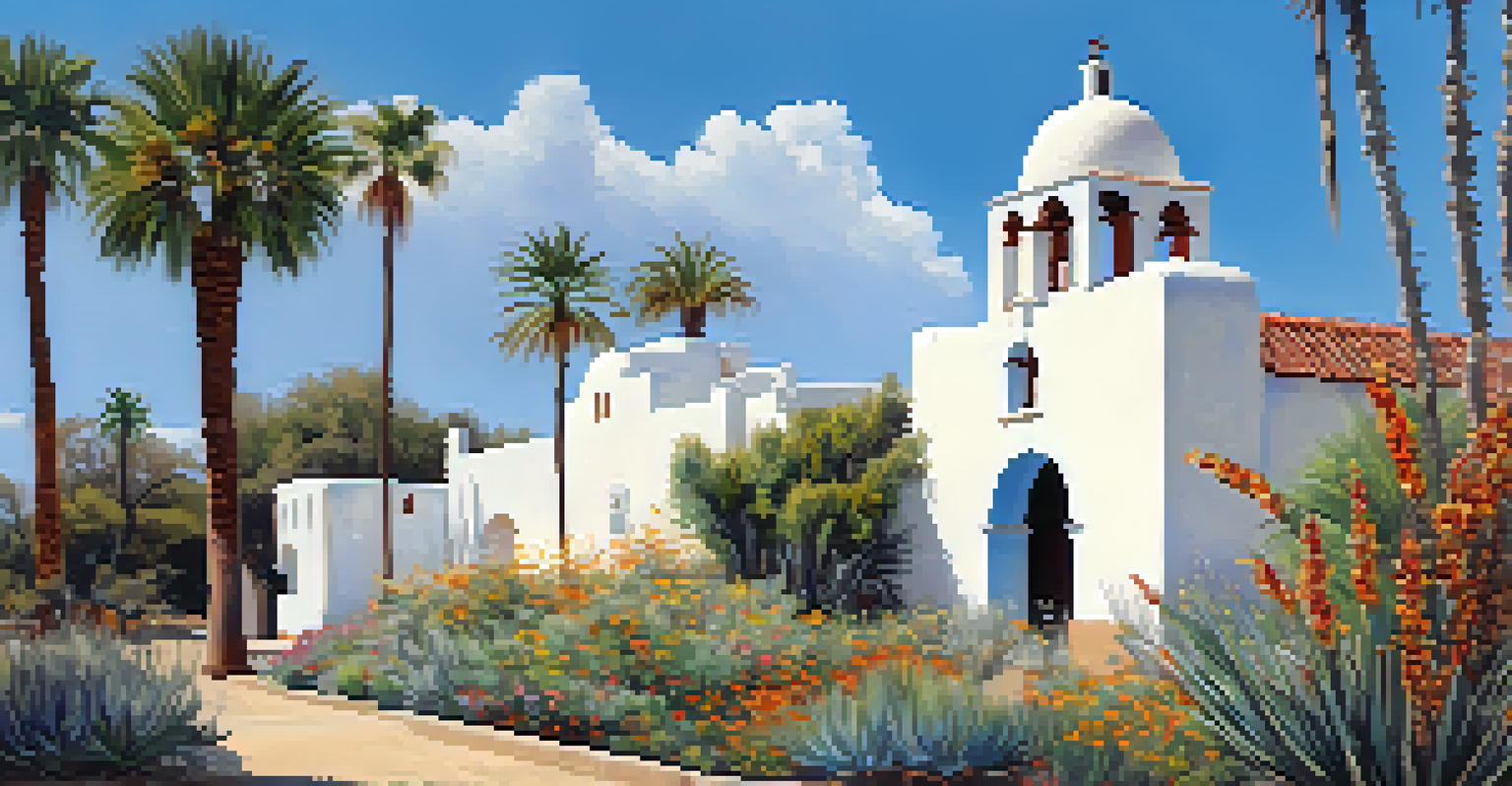The Architectural Significance of California's Historic Missions

Introduction to California's Historic Missions
California's historic missions are more than just beautiful buildings; they represent a crucial part of the state's history. Established in the late 18th century, these missions were part of Spain's colonization efforts. Each mission served as a religious center and a hub for local indigenous communities, blending cultures in a unique way.
Architecture is the thoughtful making of space.
Today, there are 21 missions stretching along the California coast, each with its distinct architectural style and historical significance. They offer a glimpse into the past, showcasing the Spanish colonial influence that shaped the region. This article will delve into the architectural significance of these missions and their enduring legacy.
From their picturesque locations to their intricate designs, California's missions are a testament to the ingenuity of their builders. As we explore their structures, we will discover how these missions continue to inspire architects and historians alike, standing as monuments of cultural heritage.
Spanish Colonial Architecture in the Missions
The architectural style of California's missions is rooted in Spanish colonial architecture, characterized by its simplicity and functionality. The missions often feature adobe walls, red-tiled roofs, and wooden beams, which were materials readily available at the time. This style not only reflects the climate of California but also the resourcefulness of the builders.

One notable example is Mission San Juan Capistrano, famous for its stunning arches and iconic bell wall. The use of local materials and techniques created buildings that blended harmoniously with the surrounding landscape. This combination of aesthetics and practicality is a hallmark of Spanish colonial architecture.
Missions as Cultural Landmarks
California's historic missions blend indigenous and Spanish influences, showcasing a unique architectural heritage.
These missions were built to withstand earthquakes, a common occurrence in California. Their unique architectural features, such as thick adobe walls and vaulted ceilings, have proven resilient over time, allowing many missions to remain standing for centuries. This durability is a testament to the architectural mastery of the period.
Cultural Fusion: Indigenous and Spanish Influences
The missions represent a fascinating fusion of indigenous and Spanish cultures. While the Spanish missionaries brought their architectural styles, they also adapted to the local environment and the needs of the indigenous peoples. This blending is evident in mission layouts and community designs.
Preservation is the key to a sustainable future.
For instance, the layout of many missions incorporated native building techniques, such as thatched roofs and communal spaces. This allowed for a more inclusive environment where indigenous tribes could participate in the mission's daily life. The resulting architecture reflects a unique dialogue between two distinct cultures.
Moreover, the decorative elements in mission architecture often showcase indigenous artistry, with carvings and motifs that tell local stories. This cultural fusion is not just an architectural feature; it embodies the complex history of California and the relationships formed during the mission era.
The Role of Missions in California's Development
Beyond their architectural significance, California's missions played a pivotal role in the state's development. They served as waypoints for travelers and settlers, promoting trade and agriculture in the region. The missions also became centers for education and skill training, fostering community growth.
As settlements grew around these missions, they laid the groundwork for the cities we know today. For example, San Diego, the first mission established, has grown into a bustling metropolis while still honoring its mission heritage. The influence of these missions is still visible in California's urban landscape.
Importance of Preservation
Efforts to preserve California's missions ensure that their architectural integrity and historical significance are maintained for future generations.
Today, many missions are integral to local communities, hosting events, festivals, and educational programs. They serve as a reminder of California's rich history and the importance of preserving cultural landmarks for future generations.
Preservation Efforts for Historic Missions
Preserving California's historic missions is essential to maintaining their architectural integrity and historical significance. Over the years, various organizations and government bodies have taken steps to protect these sites. Efforts include restoration projects and educational initiatives aimed at raising awareness of their importance.
Mission San Francisco de Asís, for example, has undergone extensive restoration to preserve its original beauty while accommodating modern needs. These efforts ensure that future generations can experience and learn from these architectural treasures. The missions' continued relevance is a testament to the dedication of preservationists.
Community involvement plays a crucial role in these preservation efforts. Many local residents volunteer their time and resources to support mission upkeep, fostering a sense of ownership and pride in their history. This grassroots engagement is vital to the missions' survival as cultural landmarks.
Modern Interpretations of Mission Architecture
The architectural significance of California's missions extends into modern design, influencing contemporary architects. Many architects draw inspiration from the missions' forms and materials, creating new structures that pay homage to this rich heritage. This blending of old and new continues to shape California's architectural landscape.
For instance, the use of adobe in modern buildings reflects the sustainable practices seen in mission architecture. The aesthetic appeal of arches and courtyards, reminiscent of the missions, can also be found in recent developments. These modern interpretations celebrate the past while adapting to present-day needs.
Modern Architectural Influence
The design of California's missions continues to inspire contemporary architects, blending historical elements with modern needs.
Architects today are tasked with balancing historical preservation with innovation, ensuring that the essence of the missions is not lost. By integrating mission-inspired elements, they create spaces that resonate with both history and contemporary life, fostering a deeper appreciation for California's architectural legacy.
Conclusion: The Enduring Legacy of the Missions
In conclusion, the architectural significance of California's historic missions cannot be overstated. They are not merely relics of the past; they continue to influence the present and future of architecture in California. Each mission tells a story of cultural exchange, adaptation, and resilience.
As we explore these architectural treasures, we gain insight into the intricate tapestry of California's history. The missions serve as a bridge connecting generations, reminding us of the diverse influences that shape our communities. Their beauty and significance offer inspiration for architects and historians alike.

Ultimately, the preservation and appreciation of California's missions are essential for honoring our shared heritage. By recognizing their architectural significance, we can ensure that these historic sites remain a vital part of California's identity for years to come.